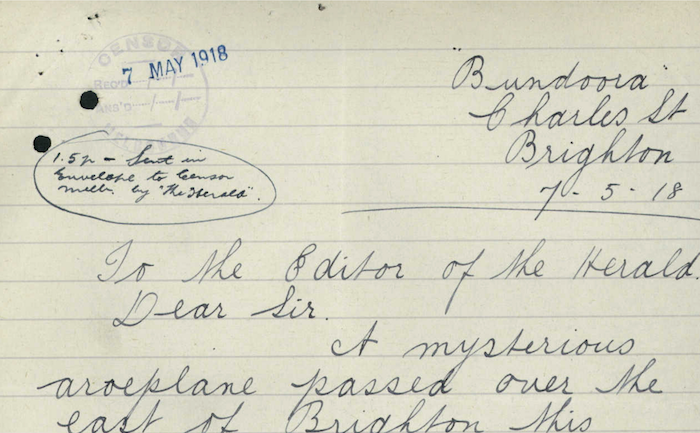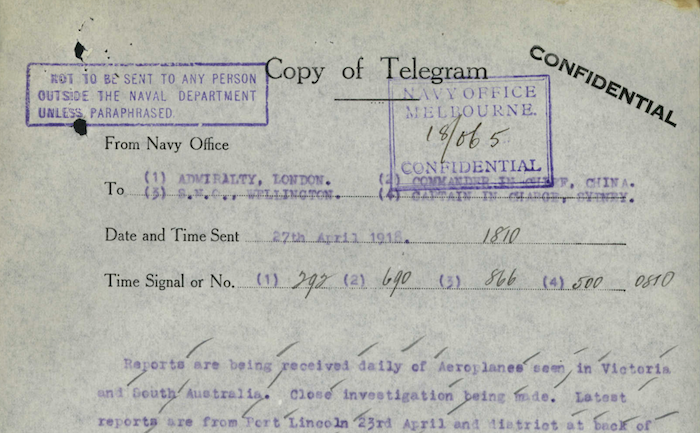Tuesday, 7 May 1918
NAA: MP1049/1, 1918/066, pages 218 and 219 is a letter from ‘Anxious’ of ‘Bundoora’, Charles St, Brighton, Victoria, to the editor of the Melbourne Herald: A mysterious aroeplane [sic] passed over the east of Brighton this morning at 10 past 7 a.m. & went south east towards Gippsland. The machine was a very large one […]










